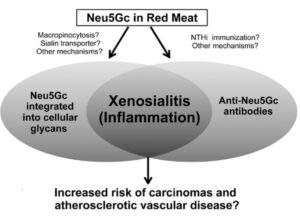Jimmy Schmidt’s Nutritional Innovations & Advocacy by Christian Bodella

What happens when a chef stops thinking only about flavor and starts thinking about the human body? For Jimmy Schmidt, that question wasn’t just hypothetical—it shaped the second half of his career. After years of success in the kitchen, he began looking deeper into how food interacts with biology, health, and the future of how we eat. The result was a steady shift from simply crafting meals to developing foods that could support well-being. The journey wasn’t about abandoning flavor—it was about redefining what good food could mean.
Schmidt’s path into nutrition and science wasn’t abrupt. It built over time, beginning with collaborations that pulled his culinary world into close contact with medicine and research. In 1996, he teamed up with Dr. Marvin Moser, a well-known hypertension expert, to create a cookbook titled Heart Healthy Cooking for All Seasons. The concept was straightforward: merge balanced nutrition with seasonal ingredients. But behind that idea was something bigger—an attempt to show that taste and health didn’t have to sit on opposite ends of the table. The book wasn’t about trendy diets. It was about finding harmony in what people already loved to eat, adjusted with care and knowledge.
This early effort opened the door to more partnerships. In 2001, Schmidt worked with Dr. Robert Atkins, a name often associated with the low-carb movement. Together, they developed a line of food products that focused on being low in carbohydrates and high in protein. These items weren’t created just for shelves—they were built on the idea that food could be engineered to align with how the body works, especially for people managing weight or blood sugar. Schmidt, known for flavor, and Atkins, known for nutrition, were blending disciplines that don’t always speak the same language.
But perhaps the most ongoing collaboration in Schmidt’s health-focused work has been with Dr. Steven Gundry, a former heart surgeon and author of The Plant Paradox. Starting in 2004, Schmidt began working closely with Gundry to explore how food impacts the body on a deeper level—not just in terms of calories or nutrients, but in how certain ingredients might trigger inflammation or support gut health. From that relationship came a variety of dishes and product concepts, all rooted in the idea of “better-for-you” foods. Some of these were eventually released under the Gundry MD brand, reflecting a blend of culinary craft and clinical focus.
To support these expanding ideas, Schmidt founded a company called Innovitality in 1999. Its mission wasn’t just to create new food—it aimed to reimagine food altogether. Innovitality focused on enhancing the nutrition of familiar items without sacrificing taste. That might sound like a marketing phrase, but the company was more concerned with formulas, functions, and figuring out how to meet the needs of a growing and aging population. This included looking at how ingredients like sugars, fats, and proteins affect the body at a chemical level—and adjusting them to improve outcomes.
One particular area of Schmidt’s research centered on a compound called Neu5Gc. Found in all mammal meats, Neu5Gc has been linked to inflammation and various diseases, including cardiovascular conditions and certain cancers. Schmidt’s work involved reducing the levels of Neu5Gc in meats and related products. This wasn’t about removing meat from the table, but about making it safer and better for those who might be sensitive to it. The improved products were brought to market through JR Ranch Foods, aimed at supporting people already dealing with serious health concerns. Learn more here https://jrranchfoods.com/health_wellness
Beyond product development, Schmidt also poured time and energy into nutrition in the context of performance. In 1999, he took on a role with GM Racing as Director of Sports Nutrition for the 24 Hours of Le Mans race in France. It’s not a place most chefs end up, but Schmidt wasn’t there to serve meals—he was there to engineer them. He created sustainable, nutrient-balanced food plans for endurance racers, helping them maintain blood sugar and physical stamina under intense stress. From this work came two functional drinks—LifeForce V and Life2Go—both designed to support active bodies with fast, efficient nutrition.
All of this innovation was built on a philosophy Schmidt repeated often: “Better Foods = Better Nutrition = Better Health = Better Quality of Life.” It’s a simple equation, but behind it lies years of study, experimentation, and quiet questioning. What if the foods we love could love us back? What if eating well wasn’t a compromise?
Throughout his career, Schmidt maintained a belief that we shouldn’t have to choose between enjoyment and health. He didn’t want to remove flavor or force people into rigid eating habits. Instead, he asked how science, tradition, and taste could work together. Could we keep the recipes but change what they do to our bodies?
As food systems continue to evolve, Jimmy Schmidt’s work remains a model for what’s possible when a chef steps out of the kitchen and into the lab—or perhaps when the lab steps into the kitchen. His career didn’t just add to the conversation around American cuisine. It helped shift the dialogue from what’s delicious to what’s sustainable, and from what fills us up to what fuels us. And maybe that’s the future of food—not just pleasure or health, but the quiet balance between the two.
Learn more http://jimmyschmidt.com







